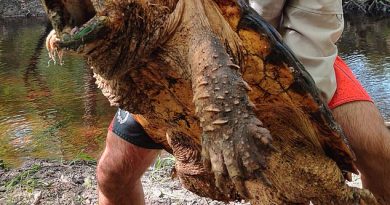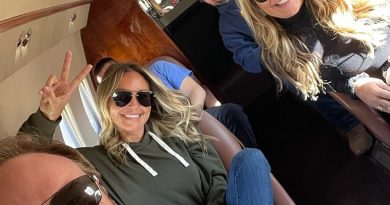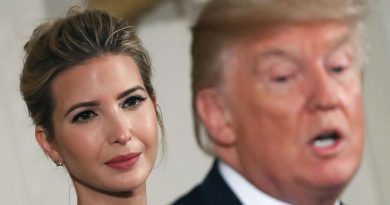Borought Park Hispanic Community Concerned COVID-19 Cases “Will Get Worse” | The NY Journal
[ad_1]
In this neighborhood of Brooklyn, with a Latino population of 9.4%, the Health authorities turn on the alarms when registering an increase in infections
For a few days now, the Borought Park neighborhood in Brooklyn has been closely watched by the City’s radar, for a worrying fact: after weeks of maintaining the COVID-19 infection rate below 1%, now an upward curve of cases puts at risk the plans to reopen the Big Apple.
Until this Wednesday and for a week in a row, this town that is home to 77% of Orthodox Jewish families and 9.4% of Hispanics, the average number of positive cases of this infection has risen with 4.7%.
This upward trend, which is registered just when the reopening of school buildings and soon the restaurants in the interior begins, has forced the City Department of Health (DOHMH) to put emergency lights in that neighborhood and five other locations: Midwood, Flatbush, and Williamsburg, in Brooklyn, and Kew Gardens and Far Rockaway, in Queens.
The DOHMH specified that in some of those neighborhoods the infection rate was triple, while in others it doubled. The increase in cases was recorded between August 1 and September 19, and now the City has grouped the four neighborhoods with the largest increase, Far Rockaway, Williamsburg, Ocean Parkway and Kew Gardens, in a group called “Ocean Parkway Cluster”, and that represent the 20% of the total positive COVID-19 cases citywide.
“Now we are seeing signs that the coronavirus is spreading in some neighborhoods faster than in the rest of the city. But as we have done in Sunset Park and Tremont, in days gone by, we will now address it in these places. We are launching a targeted approach that applies more pressure, where there is growth in COVID-19 rates. “said Dr. Dave Chokshi, DOHMH commissioner.

Massive and immediate boarding
In the coming days, they will launch automatic calls and WhatsApp messages, communications with places of worship, distribution of masks, gloves and hand sanitizer. Additionally, additional advertisements will be placed in community newspapers and new testing resources will be offered at strategic points in these six neighborhoods.
“Our goal is to be seen and heard, so the sound trucks will also carry four core messages in these neighborhoods. This must be done by and with the community. We will enhance our partnerships with community organizations so they can activate their networks to raise the prevention message to New Yorkers, ”Chokshi stressed.
The City this week will report on new test sites and surveillance tools to lower the contagion curve, especially avoiding large indoor gatherings, as well as the requirement to wear face covers if you are over two years old in public places, keeping at least six feet away from others, washing your hands, and staying home if you are sick.

“This is worse”
But, in the Borought Park neighborhood, a judgment of many Hispanic neighbors consulted, this subject will be somewhat complicated.
The Mexican Guadalupe Pacheco is 28 years old living on avenida 14 of this town and does not hesitate to predict that “the virus will get worse.
“You just have to walk around any corner and realize that many people in this community do not take any preventive measure into account. I personally think that every day I have to take care of myself more, because you get on a bus and you see people sneezing without wearing masks, “said the immigrant.
This town in Brooklyn, the most populous county in the Big Apple, is not the first time it has been on the map as a red dot for the number of infections. Already in the spring, specifically during the week of May 15, it was one of the seven zip codes that concentrated the highest number of cases and deaths.
So far in the pandemic, the 11219 zip code belonging to Borought Park accumulates 3,374 confirmed cases of COVID-19 and 241 deaths associated with the infection.
The poblano Luis Rodríguez was one of the first patients of the coronavirus during the month of March and narrates that today he takes more forecasts with the use of his mask, but unfortunately it is not usual for many residents of that community.
“I spent many days when I felt that I could not breathe, it is a story that I did not want to repeat, nor do I wish it to anyone, that is why I insist that people protect themselves. That this is not a game. If this continues, we run the risk that everything will get worse again, as in previous months, ”said Luis.

“A religious matter”
Salvadoran Luis Jamán, 34 years old and who works in a supermarket of kosher products in Borought Park, described the situation “to come” in a more direct way: “unfortunately the most important Jewish holidays of the year have already begun and these families will not stop meeting at their parties”.
According to the description of the Central American, the religious meetings and ceremonies in the synagogues with hundreds of people, gathered without a mask, have not had a pause.
“With the greatest respect, because everyone has their beliefs. In addition, they are very generous people who give us work in their businesses. But they, just as they do not like to be vaccinated, do not believe that with masks they can protect themselves from the virus. We Hispanics live well with them here, but we know that we must now protect ourselves twice as much”Says Luis.
The vision of the immigrant expressed in a “low voice” among the Hispanics consulted in Borought Park, is a reality that has occupied the Health authorities since the pandemic is being fought, more at a time when it is about avoiding the evolution of a community broadcast more widespread that spreads to other neighborhoods.
This week’s DOHMH alert to redouble actions to avoid indoor gatherings and celebrations, although it does not target any specific group, comes in the middle of the festivities of Rosh Hashana (Jewish New Year) and Yom Kippur (Day of atonement), commemorations of large gatherings.
“We have been working with leaders and institutions in the religious community for weeks and weeks, but now we are going to increase our education efforts on the ground and law enforcement efforts to address this situation”Emphasized Mayor Bill de Blasio when he addressed the alarming spike in cases in some neighborhoods.
A worrying rebound:
- 6 neighborhoods in the Big Apple now account for 20% of all coronavirus cases in the city.
- 4.7% soared the rate of infections in Midwood, Borough Park and Bensonhurst, well above the city average of 1%.
- 2% rate of positive tests for infection were reported in Williamsburg.
- 3.7% of those evaluated in Edgemere-Far Rockaway they also tested positive
- 2.2% in Kew Gardens.
- 1 in 5 cases of COVID-19 in the Big Apple are concentrated in these six neighborhoods that have doubled or tripled the cases from August 1 to September 19.
.
[ad_2]
Source link



